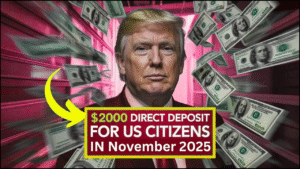If you’re passionate about rare coins, you’ve certainly heard of the famous Wheat Penny. This old American coin, decorated with a wheat design, has become one of the most desirable collectible coins in the world. Over the past 10 years, Wheat Pennies have experienced a dramatic price surge, turning them from simple currency items into highly sought-after investments. This guide breaks down their history, rarity, and price evolution, helping both beginners and seasoned collectors understand their true worth today.
Table of Contents
What Is a Wheat Penny?
The Wheat Penny, officially known as the Lincoln Wheat Cent, was minted in the United States from 1909 to 1958. Its reverse shows two stalks of wheat, which inspired the nickname. This was also the first U.S. circulating coin to feature a real person, honoring the 100th birth anniversary of Abraham Lincoln. Although production stopped more than six decades ago, its historical significance has only grown stronger with time.
Why Wheat Pennies Became Highly Valuable
Throughout its minting period, the Wheat Penny experienced several changes in design and composition. Most coins were made of copper, but the 1943 Wheat Penny was made of steel because copper was required during World War II. Rare error coins — such as double-die prints or missing lettering — are even more valuable today. These imperfections make them scarce and create massive demand among collectors.
Price Growth of Wheat Pennies in the Last 10 Years
Between 2015 and 2025, the value of Wheat Pennies has risen remarkably. In 2015, the average Wheat Penny typically sold for just a few cents. Today in 2025, well-preserved or rare versions can sell anywhere between $1 and over $10,000, depending on the year, condition, and rarity. Some extraordinary pieces have climbed much higher — the famous 1943 Copper Wheat Penny has reached multi-million-dollar auction values.
Most Valuable Wheat Pennies by Year
Below is a quick overview of some of the highest-value editions:
| Wheat Penny Year | Special Feature/Reason | Estimated Value Today |
|---|---|---|
| 1909-S VDB | Very limited mintage | Up to millions |
| 1943 Copper Penny | Minted accidentally in copper | Several million dollars |
| 1955 Double Die | Double-printed lettering | Up to six figures |
| 1922 No D Wheat Penny | No mint mark on rare pieces | $1,000 to $20,000 |
Why Collectors Are Obsessed with Wheat Pennies
To collectors, Wheat Pennies are not just old coins — they are meaningful pieces of American history. These coins symbolize Lincoln’s legacy and represent different economic eras in the United States. Many collectors spend years tracking auctions, antique markets, and even metal-detecting sites just to find one special piece. That sense of discovery is a big part of the excitement behind coin collecting.
Digital Marketplace Growth and Demand
One major reason behind the soaring value of Wheat Pennies is the growth of online trading. Websites such as eBay, Etsy, Heritage Auctions, and several numismatic communities on social media have increased the exposure of rare coins. Since 2020, demand for Wheat Pennies has grown by more than 35% across digital platforms, allowing sellers and buyers to interact globally.
What Determines the Price of a Wheat Penny?
The price of a Wheat Penny depends mainly on the following:
- Rarity – Lower mintage or unique errors increase value.
- Condition – Clear details, shiny finish, and no scratches are ideal.
- Mint Mark – Coins marked with S (San Francisco) tend to be more valuable than D (Denver) or no mark.
Future Value Potential
Collectors and market experts predict that the price of rare Wheat Pennies may continue rising for the next decade. Error coins and limited mint versions are expected to show the biggest jumps. However, due to increasing cases of counterfeit coins, buyers are advised to trade only with certified dealers and authentic auction platforms.
Final Thoughts
The story of the Wheat Penny proves that even an ordinary, low-value coin can become a priceless treasure with time. A coin once worth a single cent now sells for thousands — or even millions. Whether collected for passion, history, or investment purposes, Wheat Pennies continue to inspire curiosity and excitement among coin lovers worldwide.
FAQs
Q: Do all Wheat Pennies have high value?
A: No, only rare years, mint marks, and error coins are considered highly valuable.
Q: Can Wheat Pennies be sold online?
A: Yes, many collectors trade them through auction platforms and numismatic marketplaces.
Q: Is professional authentication necessary before selling?
A: Yes, authentication significantly increases trust and selling price.








